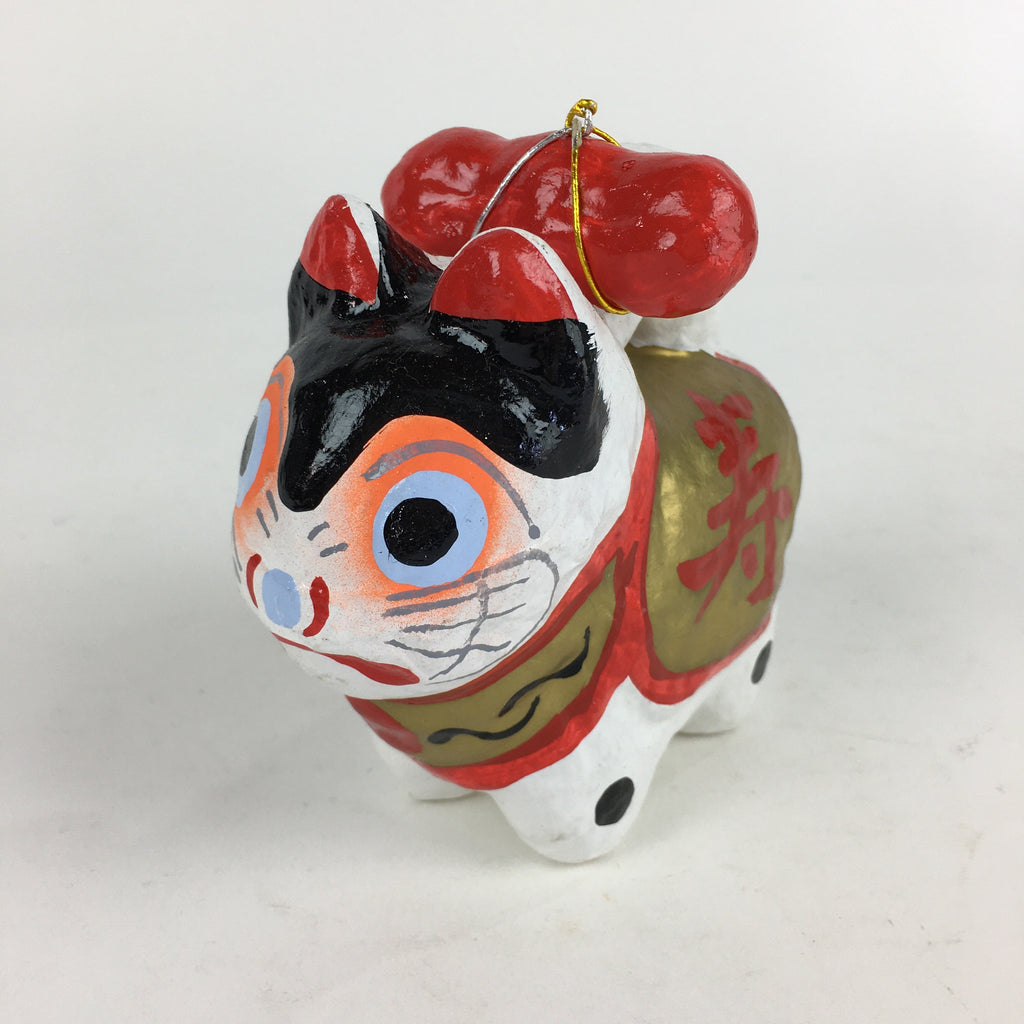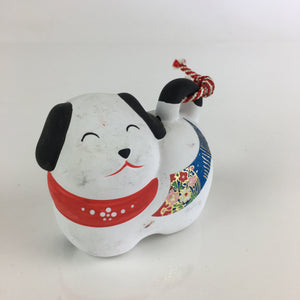Clay doll, traditional japanese bisque doll, dog clay doll, popular year of the dog, japanese ceramics, japanese folk art
Love Japanese Style Like We Do
clay doll, traditional japanese bisque doll, dog clay doll, year of the dog, japanese ceramics, japanese folk art
(listing for dog only)
This listing is for a Tsuchi Ningyo, or Japanese clay doll. Clay dolls are made from a simple mold and then painted brightly to give them form. Along with paper mache dolls they have been the most basic kind of Japanese doll since the Heian Era (794-1185). Local areas around Japan have their special Tsuchi Ningyo style.
This is a Toyama Tsuchi Ningyo and is in the shape of one of the twelve lucky animals of the Japanese zodiac, the dog. This Hagoromo Chin dog is wearing it's trademark colorful bib.
Generations of the Watanabe family have continued the tradition of Toyama clay dolls since the Edo Era. Now locals in Toyama are studying how to make the dolls in an effort to continue this important traditional craft.
- measures around 10 cm (4') tall x 10 cm (4') across.
- weighs 265 gm.
For other dolls and dolls' goods, click this link: https://www.etsy.com/sg-en/shop/JapanDownUnder?ref=shop_sugg§ion_id=27316134
For the display stand, other stands or trays please click on this link: https://www.etsy.com/sg-en/shop/JapanDownUnder?ref=shop_sugg§ion_id=27008495
For the stacking boxes or other boxes, click on this link: https://www.etsy.com/sg-en/shop/JapanDownUnder?ref=shop_sugg§ion_id=27484490
SHIPPING INFORMATION
- please read the shipping notes in our shop announcement.
LINK TO OUR ETSY HOMEPAGE:
https://www.etsy.com/au/shop/JapanDownUnder?ref=search_shop_redirect
HAGOROMO CHIN DOG
In the Edo era it was very popular for the more wealthy to keep a small dog as a pet. This style of dog was called ‘chin'. At that time people also enjoyed dressing their dog in clothes that humans would wear, a custom called ‘Hagoromo'. Colorful bibs were especially popular and the dogs became know as Hagoromo Chin. Many of the old Tsuchi Ningyo molds passed down from the Edo era depict dogs in this style.
TSUCHI NINGYO
Tsuchi Ningyo, or clay dolls, are one of the folk toys that can be seen in many areas in Japan, along with Hariko dolls, or paper mache dolls. Both have been the simplest form of dolls since the Heian period.
The shapes of the baked clay dolls are made in a mold and those same molds have been passed down through generations of the families who make them.
Clay dolls are painted and do not need to be dressed in clothes. The intricate work of the painting and the vivid colors put the soul into the dolls, making them very attractive.
The roots of tsuchi ningyo can be traced back to Fushimi Ningyo, the clay dolls made in the southern part of Kyoto Prefecture. They became popular souvenirs for people who visited Fushimi Inari Taisha and they spread to many areas in Japan.
Tsuchi Ningyo in each area of Japan have close connections with local customs, folk religions and annual events. Hina Sama dolls, Manekineko dolls, Ebisu and Daikoku God dolls, Tenjinsama, (the lucky god for study) and bells depicting the 12 animals of the Japanese Zodiac are just a few examples.
As Tsuchi ningyo age the paint work fades giving them a charm all of their own. Antique clay dolls and gods with almost no paint work are quite sought after and have a lovely ‘wabisabi' feel.
At the end of Edo Period and Meiji Era, there were about 150 areas in Japan producing Tsuchi Ningyo. Now, there are only 40 areas; about one-fourth of the peak. Although the number of makers is decreasing, there are still many avid fans collecting Tsuchi Ningyo made by famous craftsman. Many local areas are now trying to revive popular the production of their special Tsuchi Ningyo.





